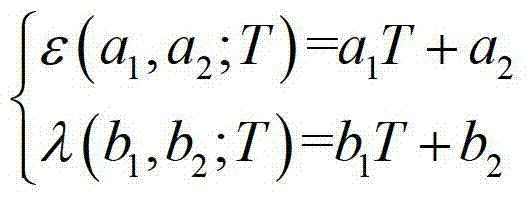Steady-state analysis-based method for measuring hemispherical total emissivity and heat conduction coefficient
A technology of full emissivity and thermal conductivity, which is applied in the field of hemispherical full emissivity measurement of conductive materials, can solve the problem of unable to calibrate the heat conduction heat loss in the sample test area
- Summary
- Abstract
- Description
- Claims
- Application Information
AI Technical Summary
Problems solved by technology
Method used
Image
Examples
Embodiment Construction
[0035] Embodiments of the present invention are described in further detail in the following examples. The following examples are used to illustrate the present invention, but should not be used to limit the scope of the present invention.
[0036] The measurement method of hemispherical total emissivity and thermal conductivity based on steady-state analysis in this embodiment is applicable to the simultaneous measurement of hemispherical total emissivity and thermal conductivity of strip-shaped conductor material samples (hot wires) with a small temperature gradient test area. The measurement overcomes the difficult problem of solving the hemispherical total emissivity under the condition that the thermal conductivity of the conductor material to be tested is unknown. The steps include:
[0037] S1. Select a slender strip-shaped conductor material sample, fix the two ends of the sample on the sample holder, place it in the vacuum chamber on the water-cooled inner wall, and e...
PUM
 Login to View More
Login to View More Abstract
Description
Claims
Application Information
 Login to View More
Login to View More - Generate Ideas
- Intellectual Property
- Life Sciences
- Materials
- Tech Scout
- Unparalleled Data Quality
- Higher Quality Content
- 60% Fewer Hallucinations
Browse by: Latest US Patents, China's latest patents, Technical Efficacy Thesaurus, Application Domain, Technology Topic, Popular Technical Reports.
© 2025 PatSnap. All rights reserved.Legal|Privacy policy|Modern Slavery Act Transparency Statement|Sitemap|About US| Contact US: help@patsnap.com



